Food is one of the best ways to understand Cairo’s soul. The city’s dining culture is a living mosaic: pharaonic ingredients like beans and honey, Arab and Ottoman spices, and modern global influences blend together on every plate. Whether you’re eating on a bustling street corner or in a rooftop restaurant with Nile views, Cairo’s food tells the story of Egypt itself.
1. Fine Dining: Cairo’s Elegant Side
Beyond the streets, Cairo offers luxurious dining experiences blending tradition with global sophistication.
- Nile-Side Dining: Floating restaurants and riverfront terraces serve everything from Egyptian grilled fish to international fusion cuisine.
📍 Try: Sequoia in Zamalek – stylish, trendy, and perfect for sunset dinners. - Rooftop Experiences: Dining above the city reveals Cairo’s skyline and historic silhouettes at dusk.
📍 Try: Kempinski Nile Hotel Rooftop – ideal for romantic evenings. - International Cuisine: Cairo’s top hotels host award-winning chefs offering Japanese, Italian, and Thai menus.
📍 Try: Birdcage (Thai) at the InterContinental Cairo Semiramis.
2. Street Food Favorites: Everyday Flavors of Cairo
Street food is the fastest way to taste authentic Cairo life. It’s not only affordable but also a reflection of how locals eat every day. The bustling energy of Cairo’s streets, the aroma of spices drifting from tiny stalls, and the clatter of busy kitchens create an atmosphere where food becomes part of the city’s heartbeat. Here are the essentials every visitor must try:
Koshari – Egypt’s National Comfort Dish

Koshari is often referred to as the people’s dish—cheap, filling, and deeply satisfying. It combines humble ingredients but delivers a surprisingly rich flavor. A typical bowl is layered with fluffy rice, brown lentils, and small macaroni pasta, then topped with spicy tomato sauce, a spoonful of chickpeas, and finished with a mountain of crispy fried onions.
What sets it apart is the addition of da’a (garlic vinegar sauce) and a fiery chili sauce, allowing diners to customize the balance of heat and tang. The origins of koshari are fascinating—it reflects Egypt’s cosmopolitan history, influenced by Italian pasta and Indian lentil dishes, but transformed into something uniquely Egyptian.
📍 Try at: Abou Tarek Koshari, Downtown Cairo – a legendary spot open since the 1950s, where locals and tourists alike line up for a plate of this beloved dish.
💡 Tip: Pair it with a refreshing glass of karkadeh (hibiscus juice) for a traditional Cairo combo.
Falafel (Ta’ameya) – The Greener Egyptian Version
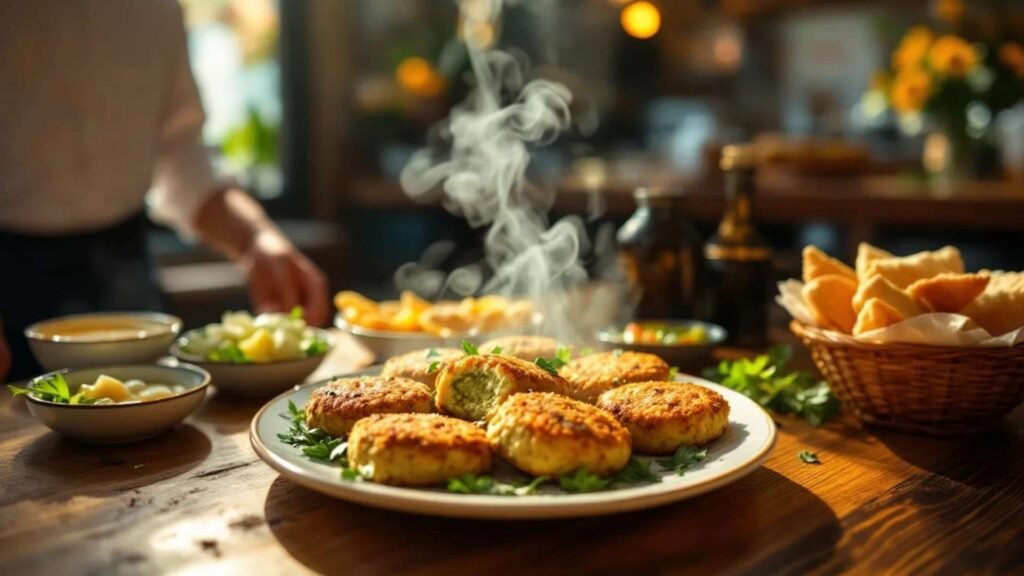
While falafel is famous across the Middle East, Cairo’s version—known as ta’ameya—has a distinctive twist. Instead of chickpeas, Egyptians use fava beans blended with fresh herbs like parsley, coriander, and dill. This gives Egyptian falafel its signature green color inside and a lighter, fluffier texture.
Served hot and crispy, ta’ameya is usually tucked inside baladi bread (Egypt’s rustic whole-wheat pita) along with tomatoes, cucumbers, and tahini sauce. It’s one of the most common breakfasts in Cairo, often sold alongside foul medames (stewed fava beans).
📍 Try at: Felfela Restaurant, Talaat Harb Square – an iconic Cairo eatery where you can sample ta’ameya in a traditional setting. Street stalls across Downtown also serve fresh falafel for just a few Egyptian pounds.
💡 Tip: Order a mixed platter with foul and ta’ameya—it’s how most locals start their mornings.
Shawarma – Cairo’s Street-Side Delight
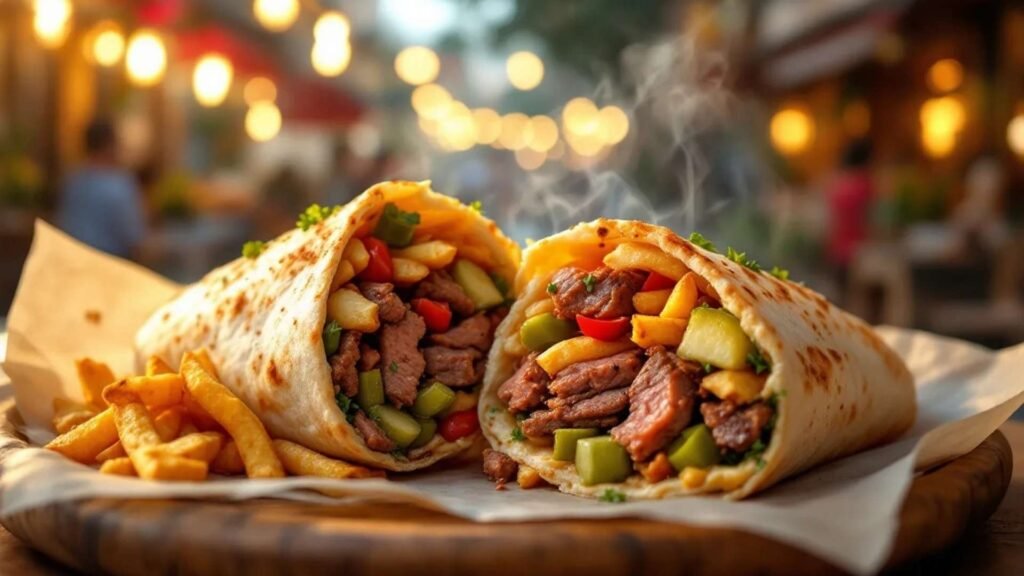
Shawarma may have roots in the Levant, but in Cairo it has been embraced as a late-night street food favorite. Thin slices of marinated lamb, beef, or chicken rotate slowly on a vertical spit, filling the air with irresistible aromas. Once cooked, the meat is shaved off and wrapped in warm baladi bread, often layered with tahini sauce, pickled vegetables, and sometimes even crispy fries.
The flavors are smoky, juicy, and comforting—a perfect snack after a day of sightseeing. While street vendors keep the tradition alive, modern eateries like Zooba reinvent shawarma with a contemporary twist, combining authenticity with trendy presentation.
📍 Try at: Street vendors in Mohandiseen (a neighborhood famous for shawarma stalls) or Zooba, Cairo’s modern street food chain that gives a creative flair to classics.
💡 Tip: Look for vendors with the busiest queues—high turnover means the meat is always fresh.
✨ Why Street Food Matters in Cairo:
Street food isn’t just about grabbing a cheap meal—it’s about experiencing Cairo the way locals do. Standing at a busy stall, hearing the chatter of vendors, and watching dishes prepared right in front of you connects you to the city’s rhythm. Every bite tells a story of Cairo’s diverse influences and its people’s love for hearty, flavorful food.
3. Classic Egyptian Dishes: A Taste of Tradition
Traditional Egyptian meals are not just about taste—they are about heritage, family, and community. These dishes carry the flavors of Egypt’s long history, often served during celebrations, family gatherings, or simply as hearty everyday meals.
Molokhia – Egypt’s Green Gold
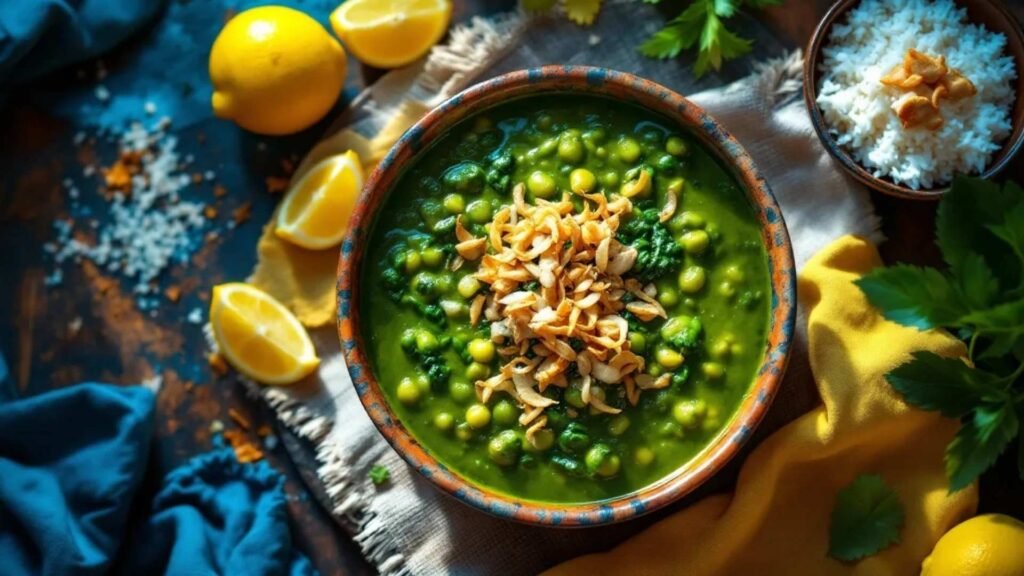
Molokhia is a dish with deep cultural roots, dating back to Pharaonic times, when it was considered food for royalty. It’s made from finely chopped molokhia leaves (jute leaves) simmered in a rich broth with garlic and ground coriander.
The texture is slightly silky, even slimy to some, which can surprise newcomers. But once you try it with freshly baked baladi bread or poured over white rice, you’ll understand why Egyptians adore it. Variations exist:
- Chicken Molokhia – lighter and common in home cooking.
- Rabbit Molokhia – a traditional version often served in Upper Egypt.
- Beef or lamb broth – adds richness for festive meals.
📍 Try at: El Prince Restaurant, Imbaba – perhaps the busiest Egyptian restaurant in Cairo, where locals line up for molokhia and other classics.
💡 Insider Tip: Add a squeeze of lemon juice to enhance the earthy flavor.
Grilled Meats (Kebabs & Kofta) – The Soul of Egyptian Barbecue
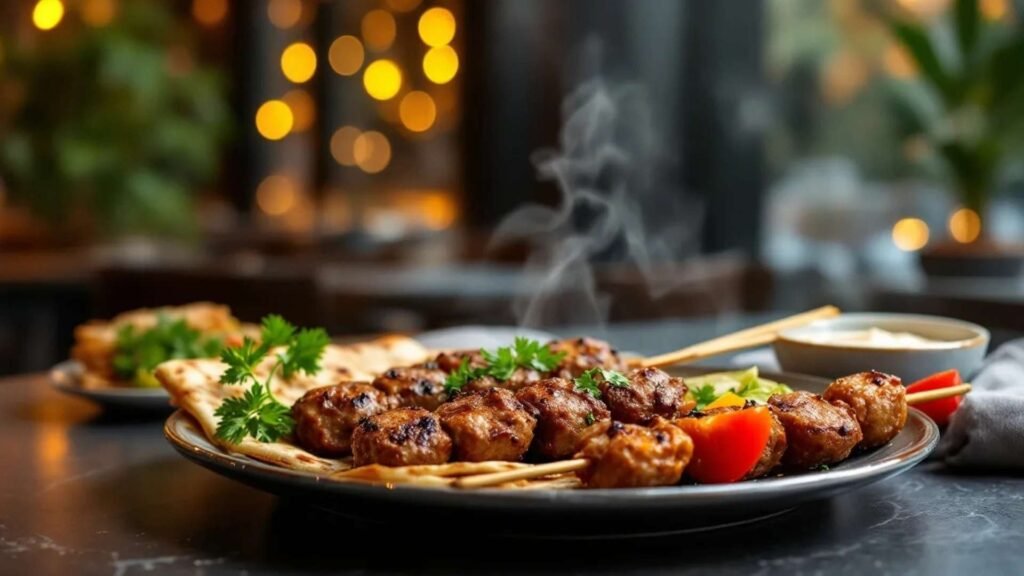
No Egyptian feast is complete without smoky, charcoal-grilled meats. Kebabs are tender chunks of lamb or beef marinated in spices, while kofta are skewers of minced meat mixed with onion, parsley, and cumin. Both are grilled over open flames until juicy and slightly charred.
Served alongside tahini dip, baba ghanoush, and warm baladi bread, this is Egyptian comfort food at its finest. Grilled meats are staples at celebrations, weddings, and family outings, making them more than just a dish—they are part of Egypt’s social life.
📍 Try at: Farahat in Islamic Cairo – legendary for its kebabs, kofta, and family-style platters.
💡 Insider Tip: Order a mixed grill platter to sample lamb, chicken, and kofta all in one meal.
Stuffed Pigeons (Hamam Mahshi) – A Festive Delicacy
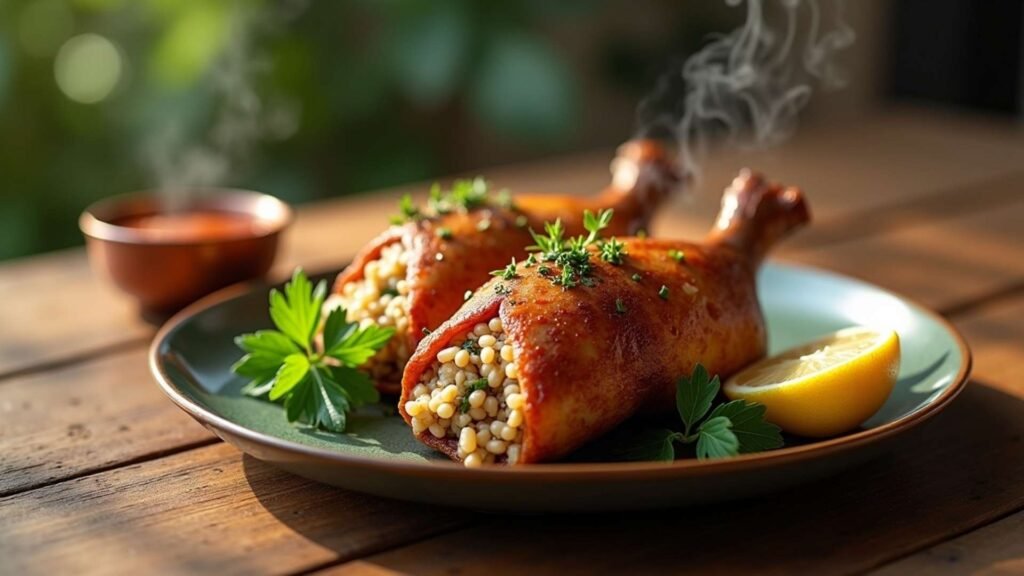
Stuffed pigeons are one of the most unique and beloved Egyptian delicacies. The pigeons are carefully cleaned, stuffed with a seasoned mixture of rice or freekeh (cracked wheat), then roasted until golden with crispy skin and tender meat inside.
Hamam Mahshi is often served during special occasions—weddings, holidays, or family gatherings—as it symbolizes abundance and hospitality. Its rich, savory flavor makes it a dish for adventurous eaters who want to taste authentic Egyptian tradition.
📍 Try at: Farahat, Al-Azhar area – famous for serving some of the best stuffed pigeons in Cairo.
💡 Insider Tip: Eat it with your hands, as locals do, and enjoy it with pickled vegetables on the side.
✨ Why These Dishes Matter:
Molokhia, kebabs, and stuffed pigeons are more than just food—they are time capsules of Egyptian culture. Each bite carries history, from ancient farming traditions to festive family tables. Tasting them in Cairo is like stepping into Egypt’s living culinary heritage.
4. Coffee & Sweets: Cairo’s Sweet Identity
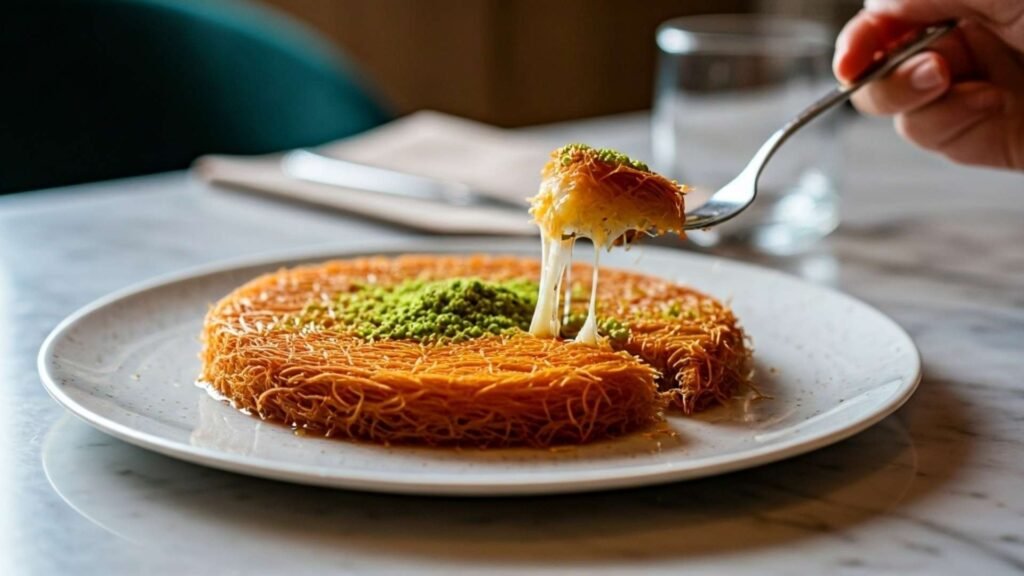
Cairo’s sweet tooth is legendary—desserts are rich, syrupy, and celebratory.
Turkish-Style Coffee (Ahwa): Strong and bitter, brewed in a small cezve and served black with sugar on the side. Best enjoyed while people-watching in a traditional café.
📍 Try: El Fishawy Café in Khan el-Khalili Bazaar – open for over 200 years.
Konafa: Shredded pastry filled with cream, nuts, or cheese, baked golden and soaked in sugar syrup. Each region has its twist, but Cairo’s patisseries excel at variety.
📍 Try: El Abd Patisserie, Talaat Harb Street, Downtown.
Basbousa: A semolina cake sweetened with syrup, often flavored with coconut.
📍 Try: Mandarine Koueider in Zamalek.
Modern Desserts: Cairo’s younger crowd enjoys fusions like red velvet konafa or chocolate basbousa.
📍 Try: NOLA Cupcakes in Zamalek.
5. Insider Tips for Food Lovers in Cairo
- Eat where locals eat: Crowded places mean fresher food.
- Go local for breakfast: Try foul medames (fava beans) and baladi bread in neighborhood bakeries.
- Avoid raw street salads: Stick to cooked dishes for safety.
- Pair food with sightseeing: Koshari after visiting Downtown, pigeon after exploring Islamic Cairo, and sweets in Khan el-Khalili for the full experience.
Conclusion
Cairo’s food is more than just sustenance—it is heritage served on a plate. From the energy of street stalls in Downtown to the elegance of Nile-side restaurants, every meal tells a part of Egypt’s story. For international visitors in 2025, the city promises not just sightseeing, but a culinary adventure that lingers long after the trip ends.
Want to Explore Further? 👉 The History of Cairo: Back to the Cairo Travel Guide

